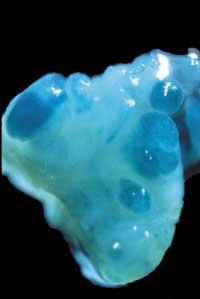Capsule cells New approach in the treatment of diseases
2001/11/01 Orive Arroyo, Gorka - Farmazian doktorea. Biofarmazia, Farmakozinetika eta Farmazia-teknologiako irakasle kolaboratzaileaFarmazia Fakultatea UPV-EHU, Vitoria-Gasteiz | Igartua Olaetxea, Manoli | Hernández Martín, Rosa | Rodríguez Gascón, Alicia | Pedraz Muñoz, José Luis Iturria: Elhuyar aldizkaria
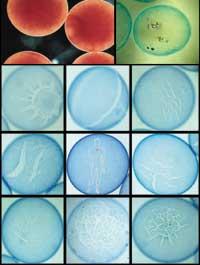
Microcapsules XX. Its use dates back to the mid-twentieth century, specifically in the pharmaceutical field. Initially, it was intended to develop pharmaceutical compounds that flow in the long term, that is, to produce controlled flow systems of the product. In this way, it was possible to slowly release the drug and extend the beneficial effect over time. In other cases, capsule technology was used to hide the flavor of certain subreviations or reduce the gastric irritation caused by medication. Over time, microcapsules spread to food (encapsulating vitamins and sweet odors) or to agriculture (with pesticides and fertilizers). The biotechnology of this new century has also sought the response to medical problems in encapsulation.
But what is cellular microencapsulation?
This technique consists of collecting biological material (cells, bacteria...) in non-polluting and biodegradable polymeric spheres. Encapsulated cells, in addition to flowing beneficial products for patients (insulin, growth hormone...), will maintain function over time.
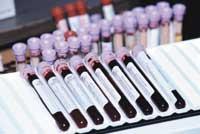
The cells are captured in capsules in a circular form. The capsules look similar to normal cells: the capsule membrane looks like a lipid membrane of the cell and the cells encapsulated a set of intracellular organelles. With this design, the complete binding of cells allows to store them in a sphere of non-polluting materials and build a protection zone.
This technique should be seen as a new strategy for drug administration. Unlike conventional pharmaceutical products (tablets or capsules), in the case of encapsulated cells, in addition to the pharmacy, its factory, that is, the cell itself, is in the drug. This way, once it is enough for the benefit to be noticed for a long time and the patient will not have to take the pill or injection of insulin every day. In addition, the encapsulated biological workshop (cells) will better understand the state of the body than anyone, so its production will be according to the needs of the body.
Reasons for encapsulating cells
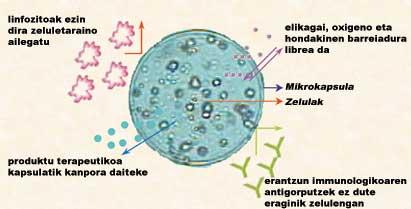
Considering that cells are producing beneficial products, why not only are cells supplied? The answer to the question should be sought in our immune response. In fact, the body's immune response to foreign particles (viruses, microorganisms...) will destroy any biological material (in addition to the patient's material). The body does not perceive cells given from outside as its own and does not understand that its function is to heal the body. Consequently, it activates lymphocytes and secretes antibodies to destroy cells.
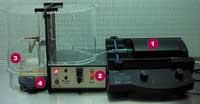
The cells, encapsulated in polymeric spheres, are hidden from the immune response. For this it is absolutely necessary that polymers are biocompatible, that is, that they are not harmful to cells and body. The immune response will not consider any unknown capsule and encapsulated cells will work for a long time (months or years). The capsules require a design suitable for proper functioning. The laboratory of Pharmacy and Pharmaceutical Technology of the Faculty of Pharmacy of the UPV/EHU is dedicated to the research and production of capsules for therapeutic purposes.
To obtain a good product, first take into account the size of the sphere. In microcapsules the diameter of the sphere is less than one millimeter. This is because the smaller the size, the greater the life of the cells, mainly due to the greater dispersion of nutrients and oxygen to the cells. At the same time, the membrane of the microcapsules should be semipermeable.
This feature allows substances to cross the membrane depending on their size and load. That is, waste (lactate) and beneficial substances secreted by the cells will be removed and small molecules (oxygen, glucose...) will be introduced without obstacles. But lymphocytes and antibodies will not be able to disperse into the sphere and the cells will be completely protected. This feature is called immunobabesa (Figure 1).
Process of cell encapsulation
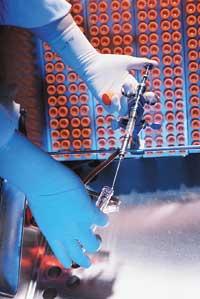
The microcapsules can be made with different materials and techniques, but the microencapsulation procedure follows a general protocol: first the polymer solution and the cells are mixed and then microcapsules are created. Finally, to be semi-permeable, the capsules are coated with other materials (Figure 2-A). Therefore, the most important factors to control are two: 1) encapsulated tool and material used and 2) selected cell type.
- The production of capsules can be very varied, although probably the most researched and used material has been the polymer alginate. Alginate is a polysaccharide extracted from brown algae. It is a natural substance with a negative charge in dissolution and excellent encapsulating properties. Alginate, when mixed with an opposite loading substance (mainly poly-L-lysine, PLL), produces a semi-permeable membrane of high stability. Another coating made with a layer of alginate will generate a pll-alginate membrane of high stability and biocompatibility (Figure 2-B). There are different cellular encapsulation tools. In the laboratory of Pharmacy and Pharmaceutical Technology a generator of electrostatic drops is used that produces capsules of the same size. It is called a drop generator because it generates very small drops of cell polymer and electrostatic suspension because it uses a power differential to achieve the target.
- Biology is as important as technological development in the production of microcapsules. The choice of cell type is fundamental, since although the same beneficial product flows, the biology of each type of cell will condition the success of the technique. On the other hand, to achieve large amounts of cells, it is important that during the growth phase the cells have a high fragmentation capacity. But it is even more urgent to lose as much as possible this capacity after encapsulation.
And if the cells multiply very much within the capsule, there will be no food for everyone and many cells die. In addition, an excessive increase in the number of cells could cause the explosion of the capsule, which would be conditioned by the immune response of cells (see example in Figure 3).
Results and benefit for society
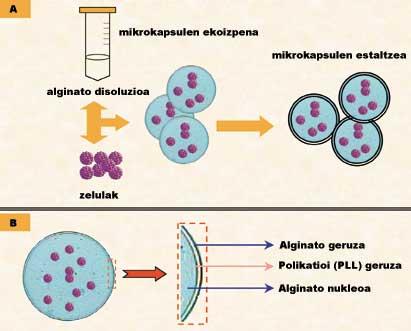
In the scientific bibliography, successful encapsulation applications can be easily found. Many refer to research carried out with laboratory animals, but a high percentage are tests carried out with human beings. The preparation protocol of the capsules is very similar for all diseases: only the type of cell and the route of administration varies.
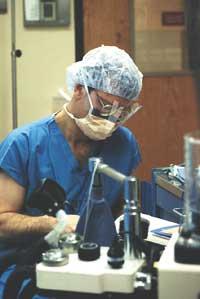
At present, cells can be taken from increasingly diverse sources, either from the sick (alogenetic) or from an animal (xenogenic). For example, to find a solution to diabetes, several researchers have encapsulated the islands of Langerhans obtained from pigs (cells in the area of insulin production). In fact, swine insulin and human insulin are separated into a single amino acid. In a clinical session, the incorporation of encapsulated islands into a patient and a significant reduction in the daily dose of insulin was achieved. In addition, he spent a month without taking any injection. Other diseases have been successfully treated by xenas and allogeneic cells. For example, hypoparathyroidism, liver and kidney inferiority, or pain.
To these results we must add advances in gene therapy. At present, the cells can be transferred so that they release the desired biological product, for which the portion of DNA corresponding to the beneficial product is established in the genome of the cells and the cell that did not flow nothing becomes the factory of the product. Thanks to gene therapy and the reading of the human genome, thousands and thousands of unknown DNA fragments will be analyzed and many will become recipes for new beneficial products.
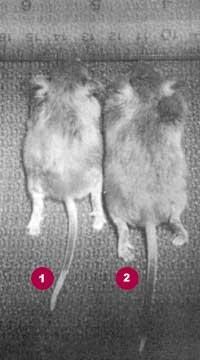
For example, VIII. and IX. Coagulation factors, cytokines, neurotrophic factors, etc. It has been produced for a long time in laboratory animals after the application of microcapsules to animals. During a study, encapsulated cells that secreted the culture hormone were implanted in the laboratory mice. Figure 4 shows the differences between the two mice (control and capsule). The results are very encouraging.
But the usefulness of encapsulation is not limited to hereditary diseases. One of the most terrible evils of today, cancer, has been successfully treated in laboratory animals. The capsules used in this research produced a factor that slows the growth of cancer. On the other hand, the accumulation of water in the intestine due to renal inferiority has been easily repaired after oral administration of capsules containing bacteria. Finally, many degenerative diseases of the nervous system (Alzheimer, Parkinson, Huntington's disease, etc.) are treated with encapsulated cells, both in basic research and clinical trials.
Researchers are investigating new forms of cell administration, such as oral, cranial, subcutaneous, etc. There is still much to be researched and tested, and new legislation remains to be done, but cellular encapsulation technology advances day by day.
The use of cells is unlimited, allows to treat many diseases and is safe. In the case of gene therapy, cells can carry safety genes and regulatory genes. All this suggests a promising technique.
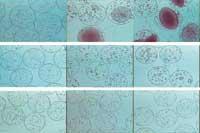
In it you can see 3 types of cells of the same type of capsules: hybridomas, fibroblasts and mioblasts. Each type of cell will have a response within the capsule. For example, hybridomas produce high cell density aggregates. This situation is quite harmful, since the cells suffer from the lack of oxygen and die a lot. Fibroblasts produce smaller aggregates. However, studies with laboratory animals have shown that fibroblast aggregates can exploit capsules and cause cancer or tumors. As can be seen in the figure, the mioblasts do not produce aggregates and become another type of cells without multiplier power. In this way, the number of cells is not altered or there is a risk of explosion of the capsule. Therefore, it seems that the cells most suitable for encapsulating are the mioblasts. (Figure 3. G. G. Orive Arroyo)

Gai honi buruzko eduki gehiago
Elhuyarrek garatutako teknologia




